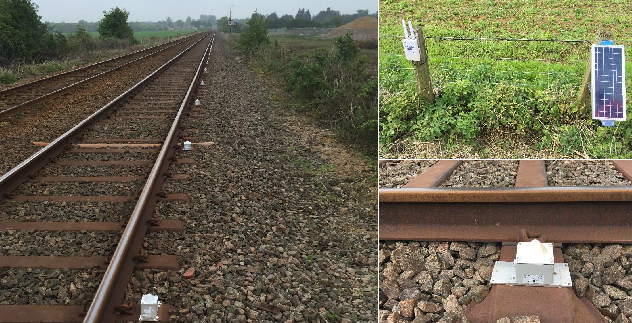Challenge
Balfour Beatty on behalf of their client, Norfolk County Council, were contracted to construct £147 million, 20km of dual carriageway called the Norwich Northern Distributor Road (NNDR). This route went very close to Norwich International Airport and joined the Fakenham Road/A1067, north west of Norwich.
As part of the carriageway construction a large structure at Rackheath had to span Network Rail’s line regularly carrying passenger and freight trains between Norwich and Cromer. Due to the close proximity of the construction works to the rail, it was deemed necessary to carry out monitoring of the track bed to ensure no deformation was taking place.
Based upon several successful deployments elsewhere for Balfour Beatty and a pedigree in monitoring many other track bed environments for Network Rail, Senceive were approached to provide their high precision wireless tilt sensors as a monitoring solution. The project started January 2016 and is expected to complete April 2018.
Solution
Senceive proposed monitoring the two rail tracks using 106 wireless triaxial tilt nodes split equally between both the UP line, where sleepers were made from steel, and DOWN line, where the sleepers are mostly made from wood with a few being concrete. The nodes were installed using sacrificial track bed mounting plates on the area of the sleeper immediately off the ballast shoulder, known as the cess, to measure cant and twist of the track bed.
The flat terrain provided ideal conditions for the FlatMesh™ system and data from the wireless mesh network was easily transmitted to two solar 3G gateways. The gateways then used the mobile GSM network to transmit data to a secure cloud server, which could then be viewed by registered users of Senceive’s WebMonitor software.
Movements were detected very early on during monitoring and triggered SMS messages at certain alert levels, which were preconfigured by the customer.
Outcome
The small movements of ±1mm for the UP line and ±5mm for the DOWN line seemed to be fairly regular and were quickly investigated by Senceive’s dedicated customer service and technical team. We worked closely with Balfour Beatty to determine the cause and through careful analysis and site testing, it was proposed that the highly sensitive triaxial tilt nodes were detecting diurnal movement linked to temperature, which varied between the sleeper’s material composition.
It was possible to remove diurnal movement by applying a 24 hour rolling median to the raw displacement data. Therefore, all subsequent movements were easily attributed to rural terrain impacting the stability of the ballast when the occasional train passed by.
